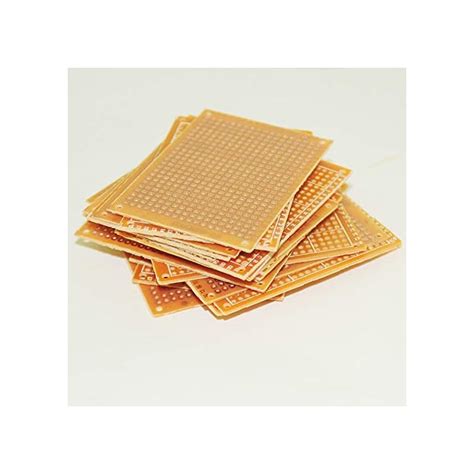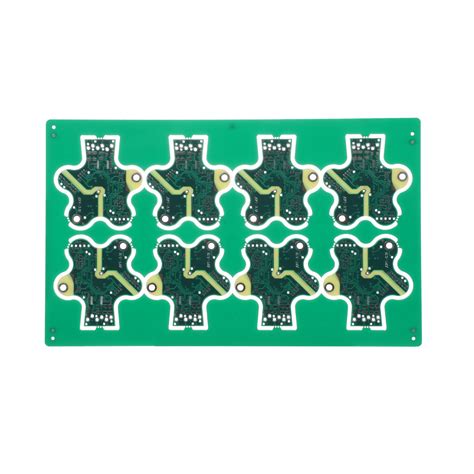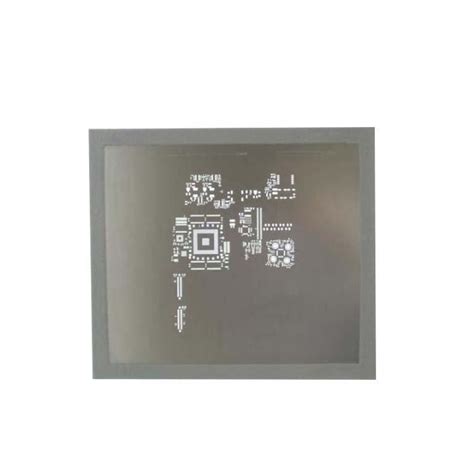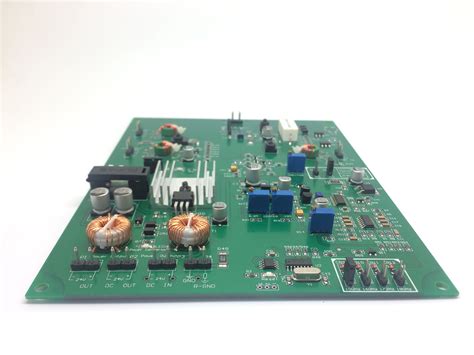Mastering the Art of Circuit Board Prototype Development
Understanding the Basics of Circuit Board Prototyping
When embarking on circuit board prototyping, it’s crucial to grasp the foundational principles that underpin the entire development process. Prototyping serves as an essential step in pcb manufacturing, allowing you to create a practical representation of your design concepts before moving to mass production. This practice helps in identifying potential challenges early on, which can save time and reduce overall pcb manufacturing costs.
In this initial phase, you may start by outlining your project’s requirements and specifications. Consider the core functionalities your circuit board must deliver, which will guide your choices in subsequent stages. Next, engaging with reputable pcb manufacturing companies can provide you with insights into their production capabilities and design constraints, making it easier to tailor your prototype effectively.
Understanding the different types of pcbs, from single-layer boards to multi-layer complex designs, is also vital in this stage. By familiarizing yourself with various design techniques and tools available, including PCB design software and layout considerations, you’ll enhance your prototype’s viability. Investing time in this groundwork not only fosters innovation but also lays a solid foundation for scaling up your pcb manufacturing business once the prototype proves successful.
Below is a concise table highlighting some key points to remember during the prototyping process:
| Key Point | Description |
|---|---|
| Requirements Gathering | Define what functionalities are essential for your design |
| Design Techniques | Explore software tools for effective PCB layout |
| Manufacturer Engagement | Communicate with pcb manufacturing companies for insights |
| Cost Consideration | Assess potential pcb manufacturing costs during development |
By focusing on these fundamentals, you’ll position yourself well for smooth transitions from conceptualization to realization in circuit board prototyping.
Key Design Principles for Effective Circuit Boards
When embarking on the journey of circuit board prototype development, understanding the key design principles is paramount to achieving success. You should start by prioritizing functionality and layout efficiency, ensuring that components are optimally placed for both performance and manufacturability. This involves leveraging design software to create a clean and organized schematic that translates to your final product seamlessly. Consider the pcb manufacturing process as an integral part of your design; focusing on how easily your board can be manufactured will influence your prototype’s success. Collaborating with reputable pcb manufacturing companies can provide valuable insights on best practices in layout and component selection, helping you avoid common pitfalls that could escalate your pcb manufacturing cost.
Moreover, while designing, it’s essential to think about thermal management, as excessive heat can compromise performance and longevity. Utilize thermal relief techniques and select materials that can withstand operational stresses. Embrace innovation by incorporating advanced technologies such as flexible circuit designs if applicable. Remember that your prototype serves not only as a functional device but also as a critical stepping stone towards production—any design flaws could lead to greater inefficiencies in later stages.
“Effective communication with your chosen manufacturing partner is key; they can tailor solutions that align with both your design intentions and budget constraints.”
Ultimately, by adhering to these foundational principles and keeping the pcb manufacturing business landscape in mind, you enhance the odds of developing a successful circuit board prototype that not only meets but exceeds project expectations.
Choosing the Right Materials for Prototype Development
When embarking on your circuit board prototype development journey, one of the most critical decisions you will face is choosing the right materials. The materials you select can significantly affect the pcb manufacturing cost, performance, and reliability of your finished product. Depending on your project’s specific requirements, various options are available. For instance, FR-4 is an industry-standard material known for its excellent balance of cost and performance, making it a popular choice among many pcb manufacturing companies. However, if you need a higher thermal stability or need to operate in harsher environments, you might consider utilizing materials such as polyimide or ceramic substrates, which can withstand extreme conditions.
Furthermore, understanding the benefits and limitations of different substrates will enable you to make informed decisions that enhance functionality while keeping costs manageable. It’s important to evaluate the overall design specifications against electrical conductivity, thermal properties, and mechanical strength to ensure your prototype meets operational expectations. Balancing innovation with cost-effectiveness is crucial for a successful pcb manufacturing business venture.
In addition to substrate selection, don’t overlook the importance of choosing suitable finishes for your circuit boards. Surface finishes such as HASL, ENIG, or OSP each have their pros and cons that can influence the solderability and durability of connections in your PCB design. By prioritizing high-quality materials and staying informed about advancements in material technology, you’ll not only optimize your prototype but also lay a secure foundation for mass production when you scale up from prototype to production phases.
For further insights into reliable PCB solutions tailored to diverse needs, consider checking out relevant resources offered by Andwin PCB Assembly.
Cost-Effective Techniques in PCB Fabrication
In the realm of PCB manufacturing, cost efficiency is vital for any developer aiming to create high-quality circuit board prototypes without exceeding budgetary constraints. By embracing effective cost-saving techniques, you can streamline your approach to PCB manufacturing costs and enhance the overall profitability of your projects. One practical method is optimizing your design before production; utilizing design for manufacturability (DFM) principles can dramatically reduce expenses associated with complex layouts and unnecessary components. Another strategy is selecting appropriate materials; working with reputable PCB manufacturing companies that offer competitive pricing on quality materials can lead to significant cost reductions. Additionally, leveraging advanced technology such as automated fabrication processes may not only minimize labor costs but also expedite production timelines, ensuring you get your prototypes into testing phases faster. By implementing these strategies, you’ll not only manage your PCB manufacturing business more effectively but also pave the way for innovative solutions that stand out in a competitive market. Remember, every decision made during the fabrication process can affect your bottom line, making informed choices essential for successful circuit board prototype development.
Innovations in Circuit Board Prototype Technology
The realm of circuit board prototype development is undergoing rapid transformations, largely driven by advancements in pcb manufacturing technologies. You have the opportunity to leverage these innovations to enhance the efficiency and effectiveness of your projects. Incorporating cutting-edge techniques like 3D printing and automated assembly into your prototyping process can significantly lower the pcb manufacturing cost, allowing you to bring your ideas to life more affordably. Moreover, many pcb manufacturing companies are now focusing on developing eco-friendly materials which not only improve the sustainability of your prototypes but also cater to the growing demand for environmentally conscious products. As you explore these developments, consider integrating novel approaches such as rapid prototyping and advanced simulation tools, which can help you test and validate design concepts swiftly. By staying informed about these trends, you can position your pcb manufacturing business for success and ensure that your prototypes reflect both innovation and quality. Embracing these technologies not only streamlines production but also empowers you with the necessary tools to meet the demands of challenging projects in a competitive landscape.
Testing and Validation: Ensuring Prototype Reliability
Testing and validation are critical phases in the circuit board prototype development process, as they directly impact the reliability and effectiveness of your final product. Engaging in rigorous testing ensures that you uncover any design flaws or manufacturing errors before moving into production. Various methods such as thermal testing, electrical testing, and mechanical stress analysis can be employed to assess the performance of your prototype under different conditions. This not only helps you refine your design but also aids in estimating accurate pcb manufacturing costs when transitioning from prototype to production.
Moreover, partnering with reputable pcb manufacturing companies can significantly enhance your testing strategies. These firms often provide expertise in compliance testing and certification processes that are crucial for specific industries. By validating your design through comprehensive assessments, you minimize the risk of costly errors during mass production, ensuring that your pcb manufacturing business thrives. Remember that a well-tested prototype reinforces confidence in your product’s reliability, facilitating smoother interactions with stakeholders and clients alike. In the fast-paced world of electronics, prioritizing effective testing and validation not only secures a dependable prototype but also positions you for long-term success in the competitive landscape of circuit board innovation.
Scaling Up: From Prototype to Production
Transitioning from a circuit board prototype to full-scale pcb manufacturing can feel daunting, yet it is a vital step in bringing your innovative ideas to market. At this stage, understanding the intricacies of pcb manufacturing companies becomes critical; choosing the right partner can drastically affect quality and turnaround time. By leveraging the advancements made during the prototyping phase, you can refine and optimize your designs for mass production. It’s essential to consider pcb manufacturing costs right from the outset, as this will influence both your budget and pricing strategies. Additionally, establishing a streamlined process allows you to efficiently scale your pcb manufacturing business, ensuring that you maintain product integrity while meeting increasing demand. By staying attuned to industry trends and adopting innovative techniques, you can confidently transform your prototypes into competitive products ready for success in the marketplace.
Conclusion
As you wrap up your journey into pcb manufacturing and prototype development, it’s essential to recognize how crucial a solid understanding of both the design and fabrication processes is. Throughout this exploration, you have learned that effective pcb manufacturing relies heavily on selecting the right materials and applying key design principles. This balance directly impacts the pcb manufacturing cost, which can significantly influence the overall budget of your project. Whether you’re working with established pcb manufacturing companies or diving into your own pcb manufacturing business, understanding innovation and efficiency is vital for maintaining a competitive edge. By streamlining the prototyping process, testing rigorously, and validating each stage of development, you can ensure that your prototypes not only meet expectations but also pave the way for successful production scaling. Embrace these insights as you embark on your next project; they will serve as a guide to mastering the art of circuit board prototype development.
FAQs
What are the benefits of creating a circuit board prototype?
Creating a circuit board prototype allows you to test and refine your design before committing to full-scale production. It helps identify any potential issues early in the design phase, ultimately saving you time and costs associated with production errors.
How does pcb manufacturing impact my prototype development?
The pcb manufacturing process directly affects your prototype’s quality and performance. By choosing reputable pcb manufacturing companies, you ensure that your prototypes are built with precision, which is crucial for testing and validation.
What factors influence pcb manufacturing cost?
Several factors influence pcb manufacturing cost, including the complexity of the design, the materials used, and the volume of production. Understanding these elements can help you make informed decisions that balance quality with affordability.
When should I consider scaling from prototypes to production in my pcb manufacturing business?
You should consider scaling from prototypes to production once testing shows that your design meets safety, functionality, and performance standards. At this stage, working closely with pcb manufacturing companies can streamline this transition effectively.
If you’re looking for more information on effective procedures and strategies around pcb manufacturing, please visit:







